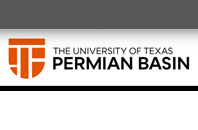
Publications & Presentations
Large Scale Computer Simulations of Static and Dynamic Properties of Disordered Materials
Document Type
Article
Publication Date
4-1-1991
Abstract
We have developed a unified approach for studying of morphological, mechanical and rheological properties of a large class of materials, including gel polymers and composite solids such as powders, colloidal aggregates and glassy networks. Our approach, which is based on an appropriate elastic or superelastic percolation network in which each bond represents an elastic element which can be stretched and/or bent, demonstrates clearly the fundamental role that the connectivity and various forms of deformation play in determining various properties of such materials. Moreover, our models reveal the existence of universal scaling laws for mechanical and rheological properties of such materials near a critical or phase transition point. In particular, we use our models to explain the phase transition that takes place in glassy networks, from a polymeric glass to an amorphous solid, in terms of a percolation model, and the experimentally-observed scaling laws for the viscosity of a gelling solution below and near a gelation point and the elastic moduli of gel polymers above and near the gelation point. In all cases, our results provide a consistent explanation for the experimental data.
Recommended Citation
Sepehr Arbabi & Muhammad Sahimi (1991) Large Scale Computer Simulations of Static and Dynamic Properties of Disordered Materials, Molecular Simulation, 8:1-2, 1-22, DOI: 10.1080/08927029108022465


Comments
Professor Sepehr Arbabi wrote this article while serving in the Department of Chemical Engineering at the University of Southern California.